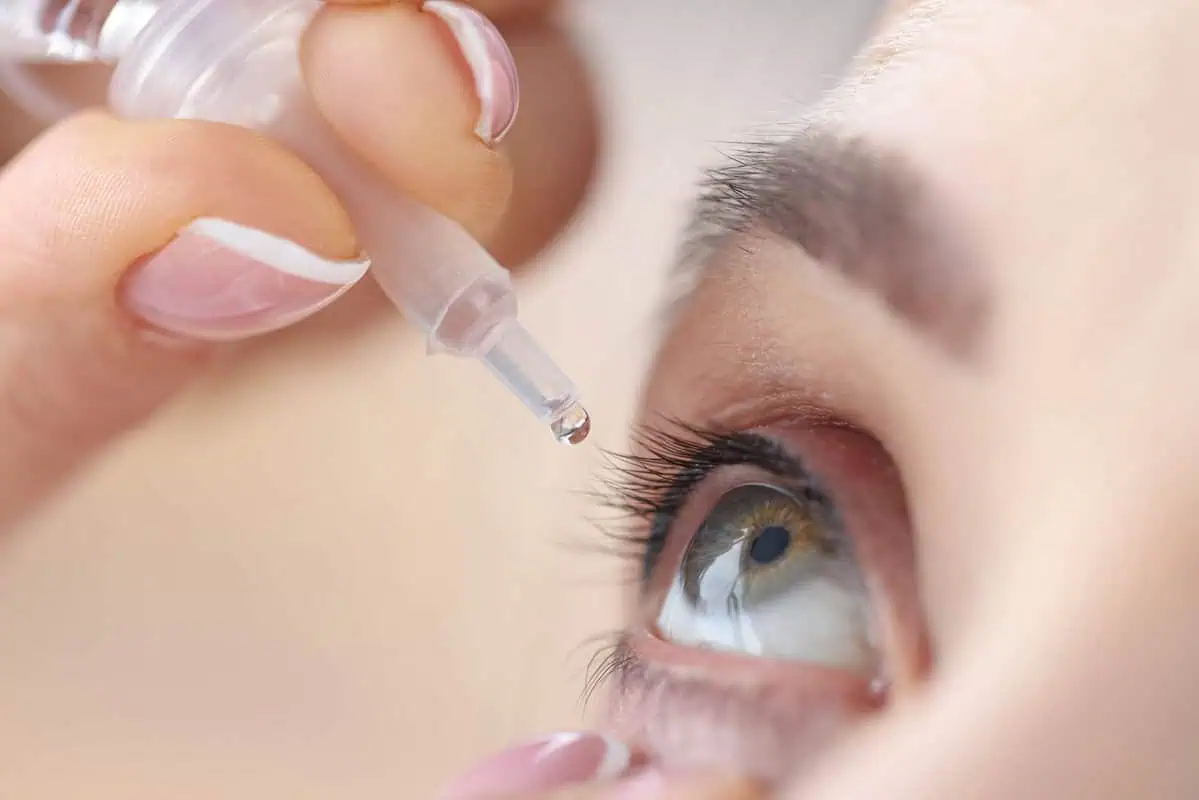Dry eye is an increasingly common condition in our fast-paced, screen-centric world. While it might start as a minor inconvenience, untreated, dry eye can become a chronic disorder that significantly impacts your quality of life. Fortunately, with expert guidance and timely intervention, you can manage temporary dry eye effectively and prevent it from becoming a chronic issue.
This guide will explore everything you need about dry eye, from its causes and symptoms to advanced treatment options and prevention strategies. Whether experiencing dry eye for the first time or looking for ways to manage a recurring issue, this will equip you with the knowledge and tools to protect your eye health.
Understanding Dry Eye: The Basics
What is Dry Eye?
Dry eye, or dry eye syndrome, occurs when the eyes don’t produce enough tears or when the tears evaporate too quickly. Tears are essential for maintaining the health of the eye’s front surface and providing clear vision. They lubricate, wash away foreign matter, and keep the eye’s surface smooth and clear.
Causes of Dry Eye
Several factors can contribute to the development of dry eye, including:
- Environmental Factors: Dry climates, wind, and smoke can increase tear evaporation.
- Screen Time: Prolonged use of computers, smartphones, and tablets can reduce the blink rate, leading to dry eyes.
- Age: Older adults are vulnerable since their tear production tends to decline.
- Medications: Medications, such as antihistamines, decongestants, and antidepressants, can reduce tear production.
- Health Conditions: Autoimmune diseases like Sjogren’s syndrome, rheumatoid arthritis, and diabetes can affect tear production.
- Contact Lenses: Contact lenses can lead to dry eye symptoms.
- Hormonal Changes: Hormonal changes during pregnancy, menopause, or while using oral contraceptives can affect tear production.
Symptoms of Dry Eye
Common symptoms of dry eye include:
- A stinging, burning, or scratchy sensation in the eyes
- Sensitivity to light
- Redness
- A feeling of having something in your eyes
- Difficulty wearing contact lenses
- Difficulty with nighttime driving
- Watery eyes, which is the body’s response to the irritation of dry eyes
- Blurred vision or eye fatigue
Recognizing these symptoms early and taking appropriate measures can prevent the temporary dry eye from progressing into a chronic condition.
Diagnosing Dry Eye: Professional Insight
If you suspect you have dry eye, it’s crucial to consult an eye care professional. They can diagnose dry eye through a comprehensive eye exam that includes:
- Patient History: Understanding your symptoms, health history, and environmental factors.
- Tear Film Evaluation: Assessing the quantity and quality of tears.
- Tear Osmolarity Test: Measuring the concentration of particles in your tears.
- Schirmer Test: Measuring tear production using a unique paper strip placed under the lower eyelid.
A professional diagnosis ensures you receive appropriate treatment tailored to your specific needs.
Effective Management of Temporary Dry Eye
Lifestyle Changes and Home Remedies
For many, managing dry eye starts with simple lifestyle changes and home remedies:
- Increase Humidity: A humidifier adds moisture to your home or office air.
- Blink More Often: Try to blink more frequently, especially when using digital devices.
- Stay Hydrated: Drink a lot of water to maintain overall hydration.
- Take Breaks: Follow the 20-20-20 rule: every 20 minutes, take a 20-second break and look at something 20 feet away.
- Warm Compresses: Use a warm, damp cloth on your closed eyelids to help release oil from the meibomian glands.
- Lid Hygiene: Clean your eyelids with a gentle cleanser to reduce inflammation and bacterial load.
Over-the-Counter Solutions
Over-the-counter (OTC) treatments can provide significant relief for mild to moderate dry eye symptoms:
- Artificial Tears: Lubricating eye drops can help maintain moisture on the eye’s surface.
- Gels and Ointments: Thicker formulations can provide longer-lasting relief, particularly at night.
- Omega-3 Supplements: Omega-3 fatty acids can improve tear quality and reduce inflammation.
Prescription Treatments
For more severe or persistent dry eye, your eye care professional may recommend prescription treatments:
- Anti-inflammatory Medications: Cyclosporine (Restasis) and lifitegrast (Xiidra) reduce inflammation and increase tear production.
- Steroid Eye Drops: Short-term use of steroid drops can reduce inflammation and provide rapid relief.
- Tear-stimulating Medications: Medications like pilocarpine can help increase tear production.
- Autologous Serum Drops: Made from your blood, these drops are rich in growth factors and can help heal the eye’s surface.
Advanced Treatment Options
When conventional treatments aren’t enough, advanced procedures can offer relief:
- Punctal Plugs: Small devices inserted into the tear ducts to block drainage and retain tears on the eye surface.
- LipiFlow: A device that uses heat and pressure to unblock the meibomian glands and improve oil flow in tears.
- Intense Pulsed Light (IPL) Therapy: IPL can reduce inflammation and improve meibomian gland function.
- Scleral Lenses are special contact lenses that create a tear-filled reservoir over the cornea, protecting and hydrating the eye.
Preventing Chronic Dry Eye: Proactive Strategies
Regular Eye Exams
Regular eye exams are crucial for monitoring vision and identifying problems early. A specialist in eye care can spot the early warning symptoms of dry eye and provide treatment options.
Healthy Diet and Hydration
A vitamin—and nutrient-rich, well-balanced diet supports overall eye health. Include foods high in antioxidants, omega-3 fatty acids, and vitamins A, C, and E. Consuming lots of water also helps maintain tear production.
Protective Eyewear
Wearing sunglasses or protective eyewear shields your eyes from wind, dust, and harmful UV rays, which can exacerbate dry eye symptoms.
Manage Underlying Health Conditions
Properly managing diseases like diabetes and autoimmune disorders prevents dry eye. Work with your healthcare provider to control these conditions effectively.
Mindful Screen Time
To prevent eye strain, limit the amount of time you spend on screens and take frequent breaks. To reduce glare, raise your computer screen to eye level and ensure adequate lighting.
Takeaway
At Eyecare on the Square, we don’t just treat dry eye; we transform lives. Our unique blend of personalized care, advanced diagnostics, and state-of-the-art treatments ensures you receive the most effective and compassionate care from dry eye to a brighter, more comfortable future with Eyecare on the Square. Your journey to optimal eye health starts here! Schedule your consultation with Eyecare on the Square and experience the relief you deserve. Your eyes will thank you!

